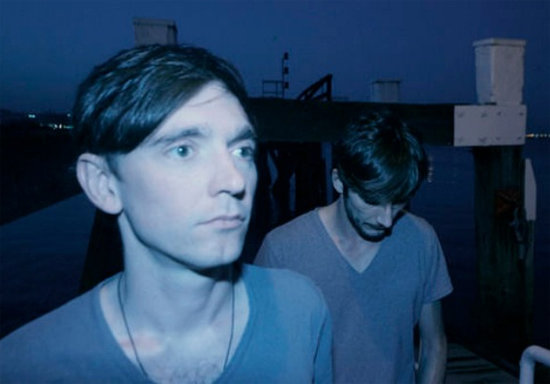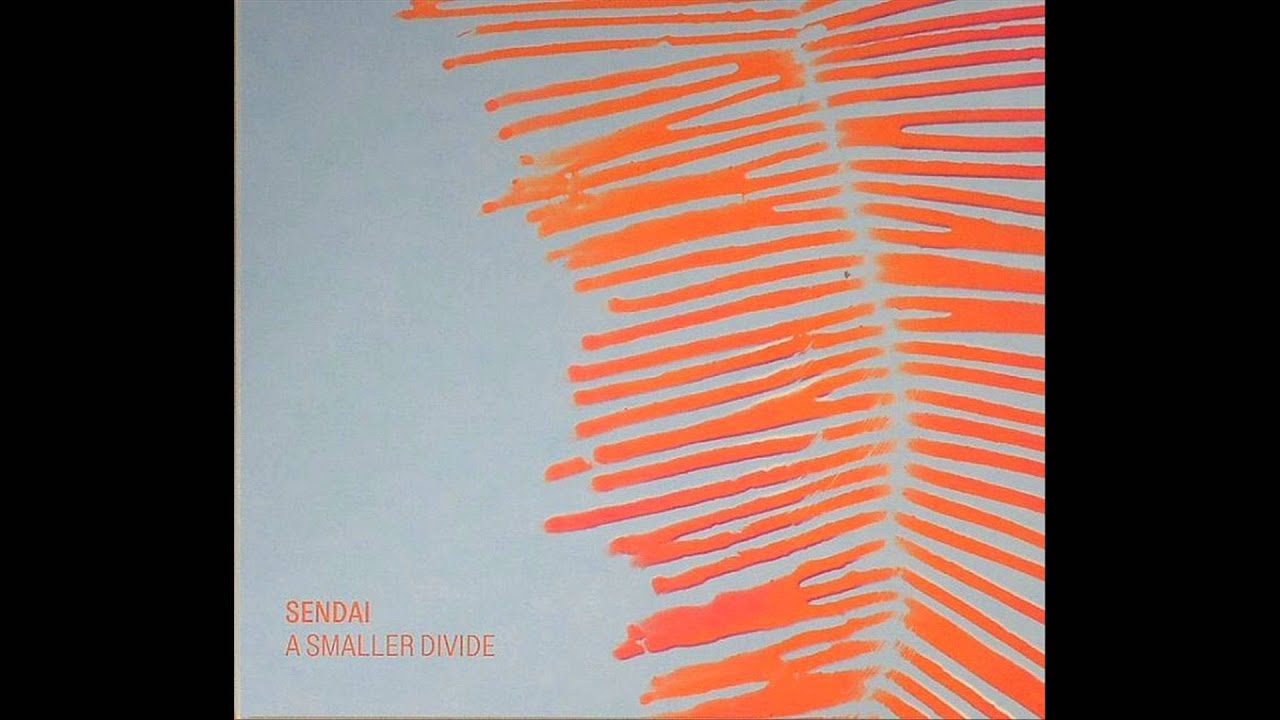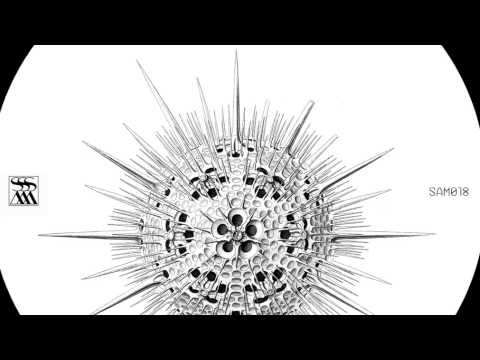Recent chatter in electronic music about loosening of genre boundaries has, to some degree, shifted focus away from those who never followed them to begin with. Few artists and labels have successfully managed to remain unique and innovative as the musical landscape has morphed and dissolved around them. There are clear examples, such as Sasu Ripatti, or the groups of artists around Raster Noton or Modern Love, or Ricardo Villalobos and Max Loderbauer, who have recently moved further into amorphous, jazz-based experiments. You could also add to that list the two members of Sendai, Peter Van Hoesen and Yves De Mey.
Although both emerged to wider attention during the late 2000s era of Sandwell District and the harder, psychedelic techno sound, both share deep roots in Belgium’s early 2000s experimental minimal scenes. Van Hoesen had long been a DJ in Brussels, and while his DJ style continues to reflect the diverse legacy of that city, his production style is quite far from it. His early releases from 2000 onwards as head of the Foton label were a rare outcropping in ultra-contemporary electronic music from a country better known for its glory days in the rave and New Beat era, a characteristic that’s continued through his own solo output through his Time To Express label. De Mey, likewise, had his own Knobsounds label in Brussels with equally idiosyncratic output, but by 2007 he had released a digital EP on Foton under his Eavesdropper alias, and his connection to Van Hoesen has remained strong ever since.
Finding common ground within the outlying regions of each other’s tastes, Sendai’s first releases veered closer to the textured techno Van Hoesen had become known for in the interim. However, they quickly left this behind for increasingly experimental wanderings that better reflect their musical backgrounds. Sendai has remained mostly an intermittent project for some time, but their style has gradually coalesced from wandering first steps to something more unified; their second full-length album A Smaller Divide, released earlier this year, found them exploring thrillingly jagged terrain, all pulses of rocky static, gravelly percussion and psychedelic melody. This summer they’ve also contributed the latest to Berlin label Stroboscopic Artefacts’ ongoing Monad series of stripped-back, floor-focused EPs. This week the duo are playing at Berlin Atonal, and are curating their own stage for one of the festival’s afterparties. The Quietus caught up with the duo over email in the lead-up to the festival’s 2014 edition.
I’m aware of each of your long production histories and his various projects in different genres, but I can’t help but feel there’s been a convergence in your separate sounds. It certainly informs A Smaller Divide, which holds together quite well as piece in comparison with your older work. Do you also feel you’re converging musically, or is it simply a matter of a more focused collaborative effort?
YDM: Both, I think. But to me, the moments when we send each other stuff that differs from what we expect to hear are the most interesting. The real fun starts when we forge those elements into something coherent, something that has a "Sendai signature".
PVH: We’re definitely getting stronger, closer towards a defined musical identity. There’s clear growth, even from our biased perspective we can see this. It’s a great feeling.
2014 seems to coincide with quite a dramatic upsurge in activity for Sendai; you’ve released more music this year than you ever have before between the album and the EP, as well as launching Archives Intérieures and playing a good many live shows, whereas before it was more of an intermittent project. What caused the shift?
Yves De Mey: All these things have been in the works for quite some time, but we’re both pretty busy, so getting things done together is more a matter of setting firm deadlines. Setting up our Archives Intérieures label was the ideal way to put some structure in our chaotic schedule. The request for an EP on Stroboscopic Artefacts came very soon after the release of A Smaller Divide, and the label had a very strict timing in mind as well. As for the live shows, I think we could be more busy.
Aside from Peter’s live album for Tresor, Life Performance things seemed quite quiet between mid-2012 and now; I’m aware of the forthcoming solo EP on Time to Express. I know Peter moved to Berlin in the interim, but what else had been consuming time in this interval?
Peter Van Hoesen: Well, to be entirely correct there was [my solo] Perceiver album in September 2012. The move to Berlin was completed long before that, so that was not really an issue during that period. I started working on a new live set after Perceiver was released, that took up a fair bit of time. Eventually this work resulted in Life Performance. Besides that I have been producing a lot of music, most of it unfinished at this stage. There’s a lot of material to complete at the moment.
I was a little bit surprised when Peter’s relationship with Tresor began; it seems appropriate but also caught me off guard. It’s clearly an important factor in your appearances at this festival. Could you tell us a bit about how this developed and what led you to it?
PVH: I’m not sure how much Life Performance has influenced Sendai’s presence at the festival, since I know that Atonal had us already in mind last year. But as far as the album goes, this is a pretty straightforward story. On July 19th 2013 Time To Express presented a label night at Tresor. During this event I played a live set. Tresor was interested in releasing it themselves. Initially the idea was to release it on Time To Express, but then it seemed appropriate to collaborate with Tresor. so that’s what happened. The album is tied to the label night that took place, and it felt logical to connect the dots between the venue and the label. This said, it also feels like a one-off project, I would like to release my next album on Time To Express again. It’s still my own personal playground.
For Yves, 2013 was an incredibly productive year; three EPs and an album is really quite a lot. What’s behind this flurry of activity?
YDM: After the release of my Counting Triggers album on Sandwell District, I got quite some attention from other labels. I made a ton of stuff in 2012, and the majority of that got released in 2013. The time between delivering my premasters and the actual release can be very long, and this makes for a bunch of releases that practically come at the same time. I try to leave some time in between releases, but it’s mostly not up to me to decide on the release date.
To my own ears I feel that the past few years have seen a loosening of strictures in electronic music towards more open forms and more experimentation; functionality is no longer such an overriding concern. What are your thoughts on the current state of the scene, and how has it affected your abilities to engage audiences and present your music as you would like to?
YDM: I’m not sure if there’s really a scene as such, so yes, the whole field feels like a loose structure, which is a good thing. Supposedly, there’s a general open-mindedness, which allows for more experimentation and crossovers. This feels very natural to me, looking at my music collection. Genres are a very boring thing. But whether an audience is engaged or not doesn’t affect us really. We do what we think we should do, and when the audience appreciates the show, it’s a big plus. We’re not doing this to make friends, but at the same time we’re extremely grateful when a crowd digs it. Admittedly, it became somewhat easier for people like us to find a spot at for instance festivals, because of a wider programming.
PVH: Exactly. Sendai would sound exactly the same without this recent opening-up within the scene. We do our thing, regardless of the world around us. That’s what makes it so much fun. If we can connect to other people then that is obviously a huge bonus.
Improvisation is a topic that came up in reference to Peter’s live album for Tresor, and to me it seems to be an increasing tendency in electronic music as many performers move back towards hardware and performance abilities increase with new tools. To what extent are the recorded pieces the result of improvisation versus composition?
YDM: The initial state of a track is usually a combination of improvised sounds. It’s very rare for us to have a rhythmic or melodic part to initiate a track. But as soon as we feel all the sounds are there, it’s indeed a matter of "composing". Probably not in a traditional sense, but nevertheless it’s a careful process and balancing act.
PVH: Yves’ modular allows for a lot of live tweaking action. I have a nice collection of machines in my studio as well. A lot of the sounds that make up the tracks arise from this live action, but the end result is always tightly composed.
Now that you have been playing more often as a duo, how would you characterise the differences in your approach to live sets versus studio work? Have you found things are becoming more fluid as you’ve been able to do more live shows, and has it affected the way you work together in the studio?
YDM: After doing some gigs related to our first album, we discussed how we could soften the border between producing and porting the tracks to a live situation. We’re using a combination of software and a lot of hardware in the studio, and this ends up on stage as well. Not all of it, but it’s indeed a small studio on stage. But it didn’t necessarily make things more fluid. I guess we’re still in the process of streamlining things, in the studio and on stage.
PVH: This streamlining will probably never end. It’s a continuous process.
How do the Sendai Sound System performances differ materially from your other live sets together? Is it a matter of also playing other artists’ music and DJing, or is there more to it past that?
YDM: The Sendai Sound System is a more improvised version of the live set, so we might use elements from the set and combine them with other things, be it our own tracks, parts from our solo work, or other artists’ tracks. It’s a very hybrid thing, processing other people’s music the same way we process our own sounds. There’s room for straightforward DJing, but at the same time it’s a real-time sample fest.
PVH: There is a core element of improv in it, we can be much looser than when we play a live show. The duration is longer, we plan to play at least four hours at Atonal, sort of in the same vein as the three hour mix we recently did for Electronic Explorations. Lots of effect units, maybe an extra drum machine – I see it as a giant dub machine.
That sounds very cool. I’ve really enjoyed the music you’ve released so far on Archives Intérieures but feel perhaps it has not been heard as much as it should be for various reasons. What are your future plans for the label, after the recent reissue from John Elliot?
YDM: Next up is a very peculiar album by Peder Mannerfelt. Totally different from what he usually does, except for the trademark high quality. It’s probably the most "archival" album we’ll ever do, and it takes us back to colonial times. That’s all I’m going to say about it for now. After that, we’ll see. There’s some things in the works, but nothing is set yet. And I agree, the AI releases should get heard more.
PVH: There is a lot of music out there, so I think it takes time for us to build a base and to reach a critical amount of people. Obviously we are operating on the fringes of things, that usually means that you need a healthy dose of patience before things start happening. But we’re both determined enough, so let’s see.
For myself the last few years have been quite an exciting time in electronic music, and I’m quite pleased with the overall direction of things at the moment. What emerging movements have caught your attention as particularly interesting that aren’t covered elsewhere in this interview?
YDM: One thing that strikes me more and more is the hype machine. Although the majority of music in the field we’re dealing with is still underground, there’s a solid hype thing going on, putting distribution, agencies and promoters on the same axis. That sounds like a good thing, but mostly, it isn’t. A lot of great stuff is overlooked, I always see the same fifteen names popping up and I feel a low or no-risk attitude. In my most negative state of mind, it reeks of a circle jerk.
PVH: For me it’s rewarding to see that people are opening up to experiments again. I hope this development can sustain itself. It is only through experiments that we can find new shapes.
You’ve both got quite a lot of stuff completed in recent months so that has been released or scheduled for release, but are there any upcoming projects or other things you’d like to mention in closing?
YDM: In the next few months I would really love to nail a full album. I’ve thrown away so many tracks over the last half year, and I definitely want to finish this one. No details about the label yet, but it comes at the right time. Musically, it’s that album that matters the most to me.
PVH: I’m working on two rather big projects; I’d like to finish those by the end of the year. There’s also a sound design and composition project for Belgian artist Kris Verdonck which I’m finishing at the moment. It’s great to work with a visually-oriented artist again.
Sendai’s A Smaller Divide is out now via Archives Intérieures, and their new Monad XVIII EP is out through Stroboscopic Artefacts.
Sendai perform live at Berlin Atonal this week. For more information and tickets, click here.





